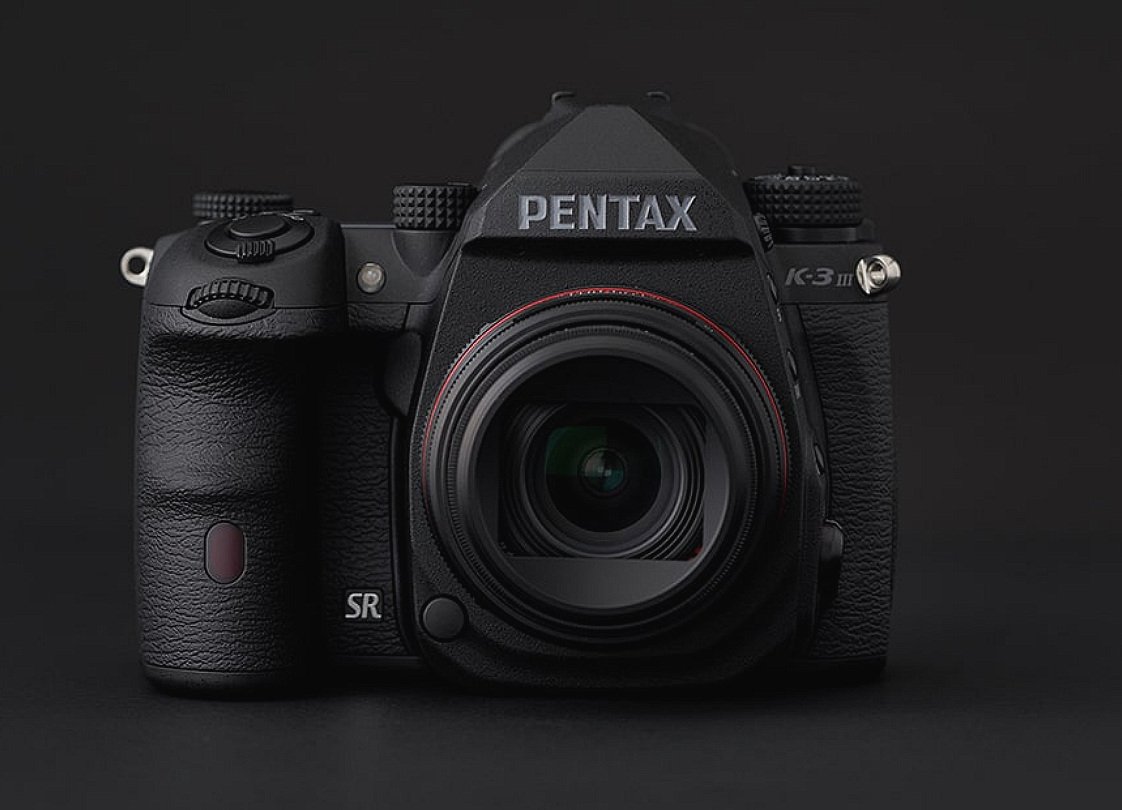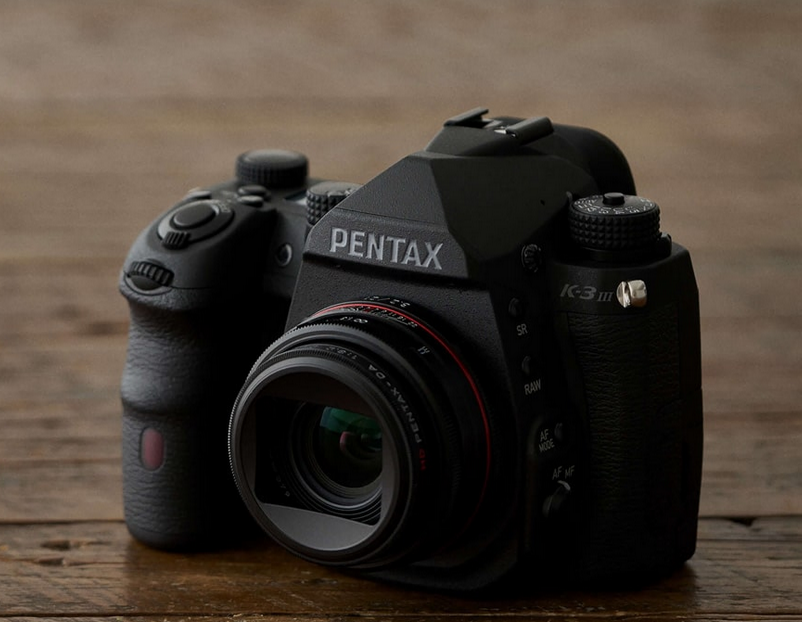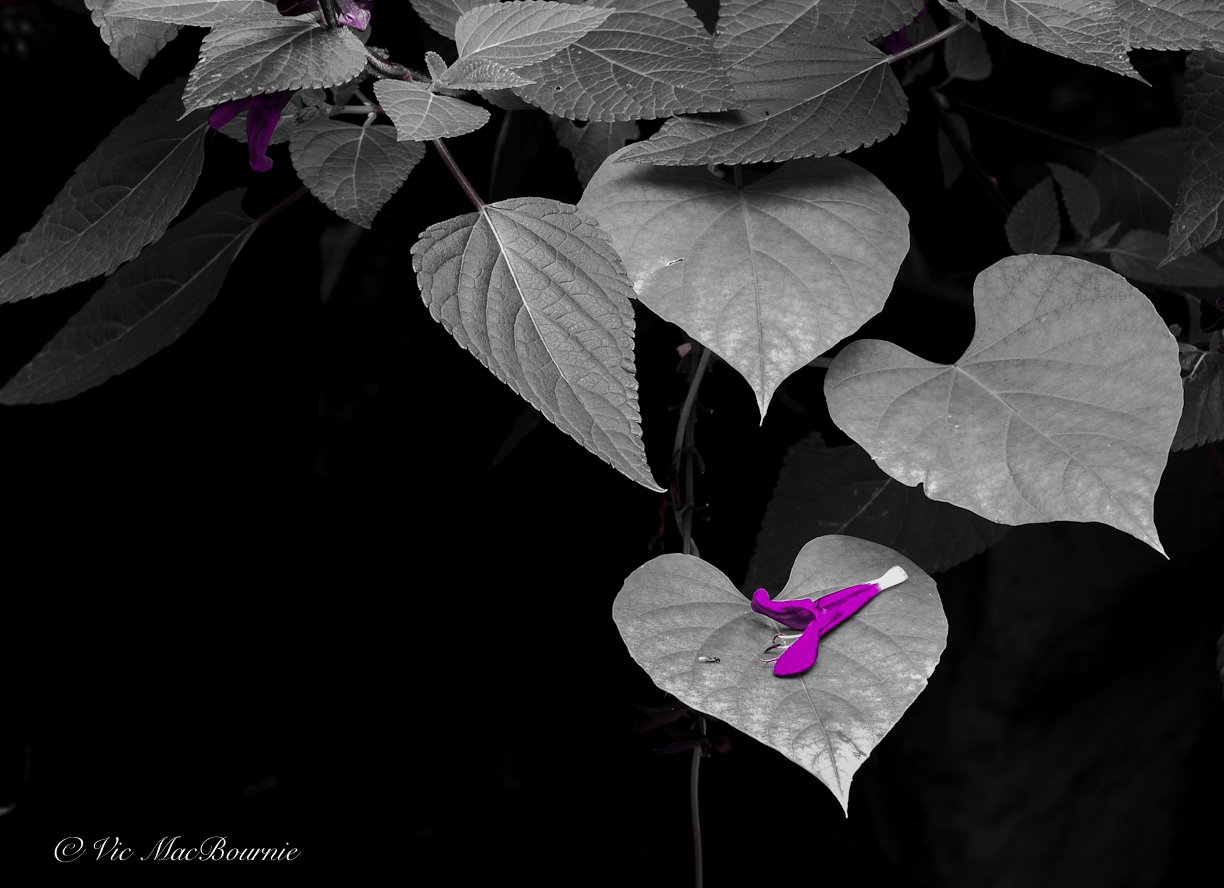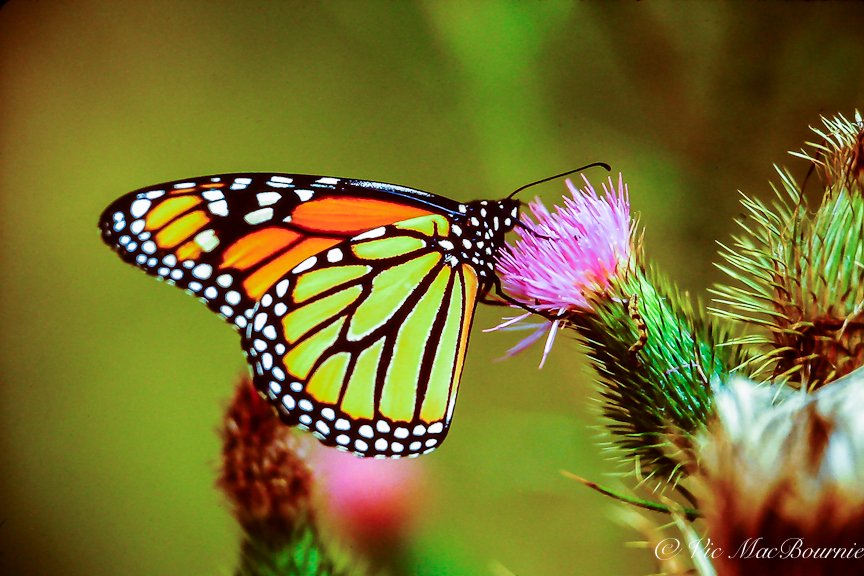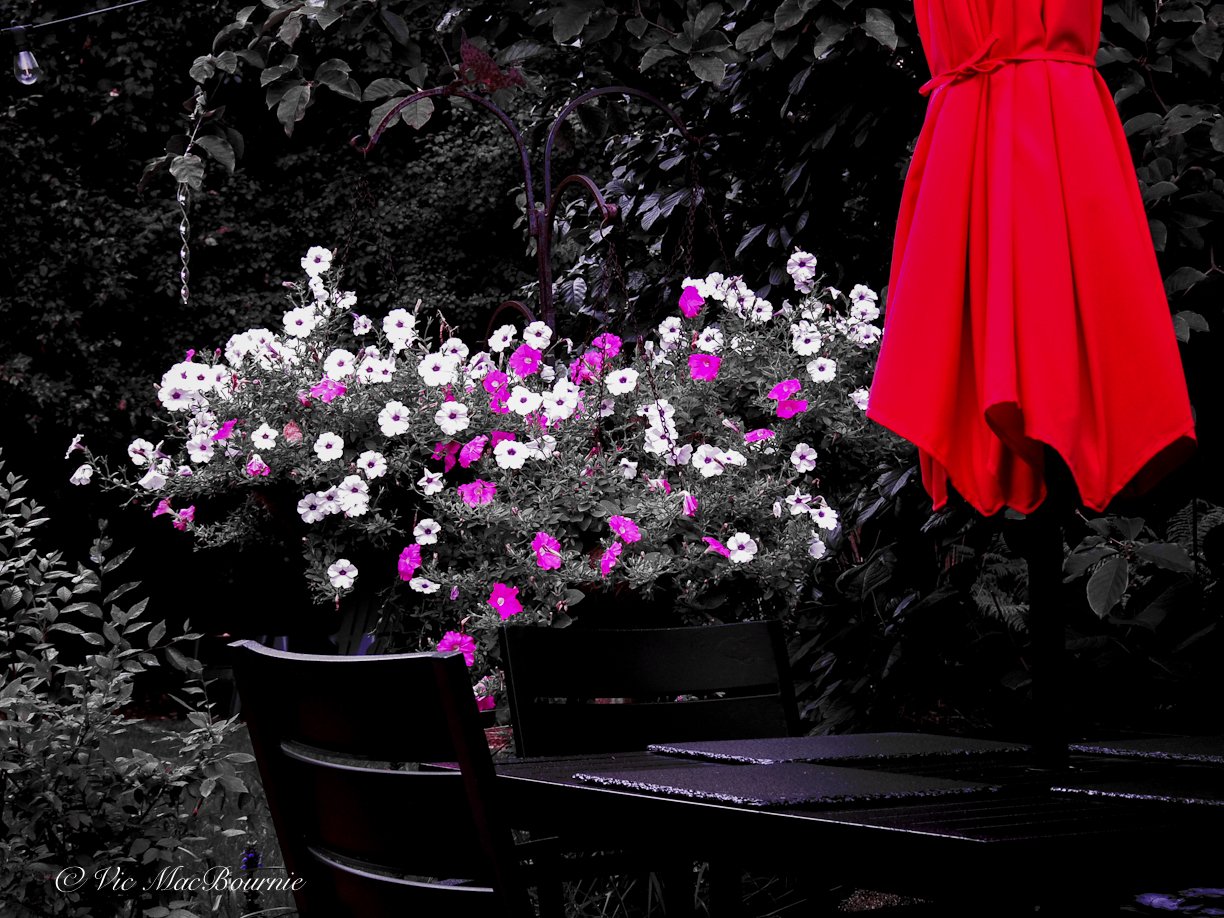Going Black & White in a world of colour
Pentax K-3 Monochrome makes it easier and more affordable
This image of a Barred Owl captured in a nearby woodland was photographed with my Pentax K5 and 300mm F4.5 with a 1.4 converter and then converted to B&W with post processing in Lightroom.
Our gardens can often be a riot of colour. Taming that colour may involve moving in close to isolate a single flower or using complimentary colours to bring harmony to the scene.
But have you ever thought of just eliminating the colour altogether to create that simplicity we all strive for in our images?
Nothing inspires simplicity quite like the magic of Black and White photographs. And, although B&W photography took a back seat with the introduction of digital photography, it never went away.
In fact, creating B&W images has never been easier.
Almost all modern digital cameras have the capabilities of shooting excellent B&W images.
In addition to shooting B&W in the camera, most imaging software programs (ie. Lightroom and Photoshop) can easily convert colour images into high quality B&W photographs.
Cameras like my Fujifilm X10 make getting to the B&W settings very simple and even include basic filters to control the tones and contrast in the images. Other modern cameras, however, hide the B&W settings deep in the menus making them a little tricky to find.
Pentax/Ricoh brings B&W photography to the masses
And some cameras, like the recently announced Pentax K-3 Mark lll Monochrome, are designed only to shoot in B&W.
Pentax has just recently joined Leica as the only manufacturers to offer photographers cameras that focus on B&W only.
And, at a suggested retail price of about $2,199.95 for a feature-packed and proven high-quality camera, exquisite B&W photography has just become very affordable in comparison to Leica’s $9,000 price tag for the M11 Monochrome.
Let’s face it, for many of us B&W photography is an after thought.
For the younger generations, B&W photography is another way to get a vintage look in their images much in the same way as the emerging trend of using older digicams or print film to create that look.
But Pentax has just made getting that vintage look fun and affordable.
Add a couple of Pentax’s venerable vintage K, M or A lenses and combine those with a couple of Pentax’s exquisite limited lenses and it’s not hard to understand why the release of this camera is a dream-come-true for B&W enthusiasts.
Pentax notes on its website that “Monochrome (or black-and-white) photography is the origin of photographic expression. Without color data, monochrome can more clearly depict the form and texture of a subject using light, shadow and the in-between gradations…”
“For users who want to master monochrome photography, the PENTAX K-3 Mark III Monochrome features an image sensor specifically designed to capture monochrome images only. By designing the camera solely for the purpose of monochrome photography, each pixel detects brightness data of the light coming through the lens. The obtained data is then directly converted to compose an image.”
What makes B&W-only cameras special?
The sensors in the cameras are designed specifically for getting the best black and white images possible complete with a higher dynamic range, a sharper image, more pleasing tones and better low-light results.
By taking one of Pentax/Ricoh’s most successful DSLR’s and incorporating an APS-C-format CMOS image sensor specifically designed to capture monochrome images, Pentax is able to offer an already proven, high-quality camera that just happens to be designed for B&W photography to the masses.
And, although I’ll admit a bias toward Pentax cameras after shooting with them all my life, the result in an exquisite example of form and function.
Pentax notes that: “By designing the camera solely for the purpose of monochrome photography…“The photographer can create extra-fine monochromatic expression in an image high in resolution and rich in gradation.”
The Pentax Monochrome also offers photographers three custom image modes for even further creative control. These exclusively designed modes for the monochrome-specific image sensor include: Standard, hard and soft.
“Each mode provides minute adjustment of parameters such as tone, key, contrast, and sharpness” Pentax notes in its website. “This allows the photographer to personalize images for the desired finishing touch.”
Pentax cameras have always been a favourite of mine when it comes to design in both form and function.
Add to the beauty and elegance of the camera, its ability to use all of the beautifully constructed vintage lenses on the Pentax cameras, and you have yourself a winning combination right out of the box.
Pentax didn’t miss a thing in the design of the Monochrome.
The K-3 Mark lll Monochrome camera body has a distinct stealth look to it, from the greyed-out Pentax writing on the front of the camera to the white backlight illumination on the LCD data panel on the top of the camera, and the Monochrome lettering printed in the upper-left area of the back panel above the LCD window.
Even the camera’s User interface menu features a black-and-white colour scheme as default, while the icons printed on buttons and switche across the camera’s exterior are finished in three shades of gray.
So, if you are serious about B&W photography, or are looking for some inspiration to take your photography to a higher level, this new Pentax offers the ability to dive into the simplicity offered through B&W.
But, if you are not sure about jumping into B&W photography at that level just yet, you can experiment by using the B&W settings on your existing digital cameras.
Here are a few tips on how to explore B&W photography with your existing cameras.
If you think you may want to explore B&W photography further, consider enrolling in the course link below.
This B&W image in the garden is made more dramatic with the single salvia flower in colour. The simplicity of the image is what makes it stand out from a full colour image or a full B&W.
3 ways to shoot in B&W
Dig into your camera settings and find the B&W filter. Almost every modern camera includes the ability to set the camera to capture images in B&W and sepia or “old fashioned” look.
In post production with software. Whether you use Lightroom, Photoshop or some other photo software, there is always a simple way to turn a colour image into a B&W. There is also software designed specifically to get the most out of your B&W images using tonal controls etc.
For dedicated B&W photographers, consider purchasing the Pentax K-3 Monochrome or the Leica Monochrome. These cameras only shoot B&W, but the results can be stunning.
A dusting of early morning frost brings this B&W image to life. Note the contrast in the image with the white frost jumping out from the dark shadows. The simplicity of the image is really in its unperfect pattern.
Spend some time digging in the the special effects filters in the camera settings and you will likely come across them. Both my Lumix cameras and traditional Pentax DSLRs have the B&W settings buried in the menu settings. Most modern cameras also offer Sepia and/or “old fashioned” settings which are monochrome images with a hint of amber.
A simple click of the mouse is all it takes in Lightroom to transform a favourite colour image into black and white. There are even separate image software programs aimed at serious B&W photographers. (Among the best is Nik Silver Efex described as a means to “Master the art of black and white photography with the most comprehensive range of darkroom-inspired controls to help you create stunning monochrome images. )
It’s important to note that, while converting a colour image into B&W can be as easy as a simple click in most photo editing software programs, the conversion is usually just the beginning of the process. Once the B&W conversion has been completed, there are a number of adjustments that need to be made to complete the process and get the desired image.
Most photographers who shoot for B&W develop their own procedures in the conversion process to create the best result. (For a complete article on converting colour images to B&W using Photoshop, check out this in-depth article in photoshopessentials.com
The steps used in Adobe Lightroom often include:
Increasing the contrast of the image (create deep blacks and solid whites)
Using sliders to control highlight and shadow areas
Sharpen areas of the image that you want to stand out
Crop distracting areas that might not have been as noticeable in the colour version
How popular is B&W garden photography?
Consider that Britain’s Guardian newspaper even includes a B&W category in their annual garden photography contest. These stunning images from the photo contest in B&W should be plenty of inspiration to convince you to try B&W garden photography.
If you need more inspiration for B&W flower photography, try browsing these images from Fine Art America.
While it has never been easier to create B&W images, don’t be fooled by how simple modern cameras have made the process. Creating images with great depth in the blacks and impressive tonal qualities throughout the images, is certainly an art form.
I’ll be the first to admit that my expertise in this area is limited, but I do enjoy experimenting with images and believe strongly that a photograph is often just the beginning of the creative process, whether that involves creating a B&W from a colour image or turning a colour photograph into a digital painting.
Creating an effective B&W image is really all about simplicity.
Whether you create B&W images through software manipulation, take the image with a camera set to B&W program mode, or use one of the monochrome-only cameras, the results can be very effective.
Here are five of the best cameras to create Black & White images according to Artnews
Fujifilm X-Pro3 Mirrorless Digital Camera. ...
Sony a7R III Full-Frame Mirrorless Camera. ...
Leica Q2 Monochrom Full Frame Compact Digital Camera. ...
Sigma DP3 Quattro Compact Digital Camera. ...
Sony Alpha a6000 Mirrorless Digital Camera.
For a detailed description of each camera go to the Artnews website
B&W conversions via external software
The following are a few images from my garden created from colour images. I have included some of the original colour images to help readers see what can be done with a little imagination.
Woodland Wildflower in B&W
The simplicity of this image in colour makes it a perfect candidate to convert into a B&W image. The Jack in the Pulpit is set against a dark background making tweaking of the main subject much easier by darkening the shadows to some extent and lightening the highlights in Lightroom. Maintaining some detail in the background helps to give the image a natural look. In a studio, a solid black background would be effective but give the image a more contemporary look.
Monarch on thistle
Capturing successful wildlife in B&W can be more difficult. The simplicity of the background and the high contrast of the black veining in the monarch helps make this image work in B&W. In my mind, the out-of-focus flower in the bottom right is less noticeable in the B&W image compared to the same colour photograph.
Contemporary tulip
A macro shot of a tulip works in both colour and B&W because of the inherent simplicity of the image. The negative space in the B&W image creates a different feel than the same space in colour. There is no doubt that in the colour image more tulips make up the background, but the B&W leaves that up to your imagination.
Even wildlife can look good in B&W. This young buck was almost lost in the colour image, but with some manipulation I was able to make it more prominent.
This fern is lit by a ray of sunshine allowing it to stand out among background ferns in shadows.
This B&W image combines textures in the concrete bunny bench with the lovely Black-eyed-Susans that have been lightened in Lightroom to make them stand out even more.
Similar to the main image in this article, frost rimming elements on the forest floor adds plenty of drama. By maintaining the whites of the frost, but deepening the blacks in the shadows, the image is simplified.
An early snowstorm helped to simplify this red squirrel looking for food beneath the Northern Sea Oat ornamental grass. Once again, it is the simplicity of the image that helps it to work as a B&W image. Without the snow simplifying the bottom and areas in the background, the image would likely have been too busy to work as a B&W.
Shooting B&W in camera
Most high-quality digital cameras made today have B&W capability built right into them. Some even only photograph in B&W offering the highest quality monochrome images. These highly specialized cameras are designed for the most discriminating B&W photographers and are probably not necessary for most of us who just want to photograph our gardens and possibly hang a few artistic garden images on our wall.
Fujifilm cameras are known for replicating their original 35mm films in a digital format. My Fujifilm X10, for example, includes digital versions of former Fuji films including Provia, Astia and Velvia settings that allow photographers to replicate the same colours and feelings we remember in the film and slide eras.
Included is a B&W digital film that includes the ability to add traditional digital colour filters to enhance scenes, especially the ability to enhance skies. These same filters, a green filter for example, can create subtle differences in the leaves of trees, flowers etc.
Focusing on B&W images only in your garden
Going out into the garden with the sole aim of shooting B&W involves taking a different approach to your garden photography. It is an exercise worth tackling on a regular basis to help develop an “eye” for B&W images.
It can be fun, too, but be ready for plenty of images that just don’t work in B&W. As your B&W vision develops, your success ratio will certainly increase to the point that you will be wanting to frame them up and hang them on your wall.
A black and white garden image just has more artistic merit to hang on a wall than most colour photography.
Another feature on the Fujifilm X10 and most other digicams is the ability of the camera to take a black and white image that picks up just a single colour – green, yellow and red. I noticed a similar feature is available in the Lumix ZS50 travel camera and my Pentax Q cameras. Used sparingly, this can be very effective. The following are two images using this filter that I think work to some degree.
This image used the red and purple filter in the camera to add colour to the primarily B&W image.
Using the red filter creates a B&W image that picks up any element in the photograph that is red. In the image above, I also used the purple filter to bring out some of the flowers’ colour. The effect is interesting and requires a little thought to make it work. Below, the green filter was used to pull out the foliage of the wild geranium just to add a pop of colour. A true B&W or colour image would not have worked well in this situation, but works to some degree with these filters to give the image a unique look.
In conclusion
At a time when your garden lacks inspiration, taking advantage of the B&W capabilities in your camera can provide inspiration to take up a new challenge. Late Fall is an ideal time to begin develop your eye for simplicity. When winter finally hits, and snow buries parts of our garden, you will be ready to capture the beauty and simplicity of the winter woodland garden.
This is the time Black and White photography comes into its own.
If you are looking for more information on B&W photography in the field or in the garden, take minute to check out the YouTube video Walks on The Wild Side where photographer Scott Walker provides excellent tips on taking B&W nature photography.


